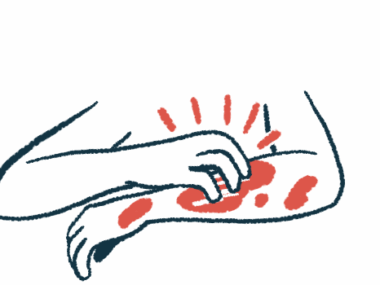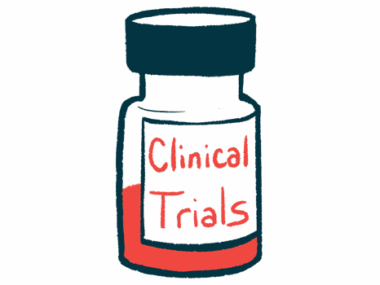Filsuvez Gel Becomes 1st Therapy Approved in EU for EB Wounds
Written by |

The European Commission has approved Amryt Pharma’s Filsuvez (Oleogel-S10) for the treatment of skin wounds in adults and children, ages 6 months and older, with dystrophic epidermolysis bullosa (DEB) or junctional epidermolysis bullosa (JEB).
The decision makes Filsuvez, a topical gel, the first-ever therapy approved for EB wounds.
The approval “is a major positive development for European patients who suffer from this debilitating condition,” and “we have in place the team, financial flexibility and global infrastructure to bring it to market swiftly,” Joe Wiley, MD, Amryt’s CEO, said in a company press release. “We are very excited to begin delivering Filsuvez to treat European patients as soon as possible.”
Health authorities in each European Union member state, as well as in Iceland, Norway, and Liechtenstein, will now decide separately whether to add Filsuvez to their respective public health programs, which allow patients to access treatments at low or no cost.
The European Commission’s decision comes about two months after the Committee for Medicinal Products for Human Use (CHMP), a branch of the European Medicines Agency (EMA), recommended Filsuvez’s approval. In the U.K., a regulatory decision is expected soon.
The European review process, initiated in March 2021, was marked by two delays. The first was due to a list of outstanding EMA questions that Amryt had to address before further evaluation, and the second was associated with the agency’s call for opinions from EB patients and independent experts before delivering a recommendation.
Filsuvez received orphan drug status in Europe, which in addition to providing financial incentives and regulatory support to accelerate the therapy’s clinical development and regulatory review, offers a 10-year period of market exclusivity upon approval.
The therapy was also granted orphan drug, rare pediatric disease, and fast track designations in the U.S., where a similar application was rejected early this year. The U.S. Food and Drug Administration considered that more evidence of Filsuvez’s effectiveness in EB is needed.
Amryt plans to discuss the nature of the requested data with the agency to address its concerns.
The company noted that Filsuvez’ approval in the European Union provides a regulatory core dossier that may support future regulatory submissions in Latin America and the Middle East.
Originally developed by Birken AG, which was later acquired by Amryt, Filsuvez is a gel based on an extract of birch tree bark that contains high amounts of a compound called betulin. Previous studies suggest that betulin, when applied to the skin, can promote wound healing by activating skin cells and suppressing inflammation.
In 2016, the gel was approved in Europe under the brand name Episalvan for the treatment of partial-thickness skin wounds — those in which the top layers of the skin have been lost due to burns or skin grafts. Such wounds also occur in people with EB, a group of rare skin disorders characterized by extremely fragile skin that is prone to form blisters.
The European Commission’s decision was mainly supported by top-line results from the global Phase 3 EASE clinical trial (NCT03068780) — the largest ever in EB, according to Amryt.
Involving 58 sites across 28 countries, the study tested Filsuvez against a placebo gel in 156 children and 67 adults with either JEB, DEB, or Kindler syndrome who had an EB-related wound between 10 and 50 square centimeters in size (about 1.5 to 8 square inches) for three or more weeks, but less than nine months.
JEB and DEB are more common forms of EB, while Kindler syndrome is a very rare form.
Participants were randomly assigned to use either Filsuvez or a placebo gel for three months.
EASE’s top-line findings showed that the trial met its main goal, with a significantly greater proportion of Filsuvez-treated patients exhibiting wound closure within 45 days, compared with those using a placebo gel (41.3% vs. 28.9%).
This benefit was exclusive to participants with recessive DEB, who showed a 72% higher likelihood of wound closure within 45 days with Filsuvez relative to a placebo gel.
No significant differences in wound closure were detected between Filsuvez and a placebo among participants with dominant DEB or JEB. Recessive DEB is commonly more severe than dominant DEB.
While a greater proportion of patients using Filsuvez showed wound closure within three months — and faster than those on the placebo gel — these differences failed to reach statistical significance.
According to participants’ reports, Filsuvez was associated with significantly less pain during dressing changes on day 14, compared with the placebo gel. However, at three months there was only a trend favoring the therapeutic gel.
Similarly, greater reductions in total body wound burden and total area of EB partial-thickness wounds were also reported by patients treated with Filsuvez, but these differences were, again, not significant.
This meant that EASE’s secondary goals were not attained.
Filsuvez was generally safe and well-tolerated, with the most frequent adverse events including wound complications, itching, wound infection, fever, and low levels of red blood cells.
All participants who completed the three-month period entered the study’s extension phase, in which all are using Filsuvez for two years to heal their wounds. The goal is to evaluate the therapy’s safety over the long-term.





